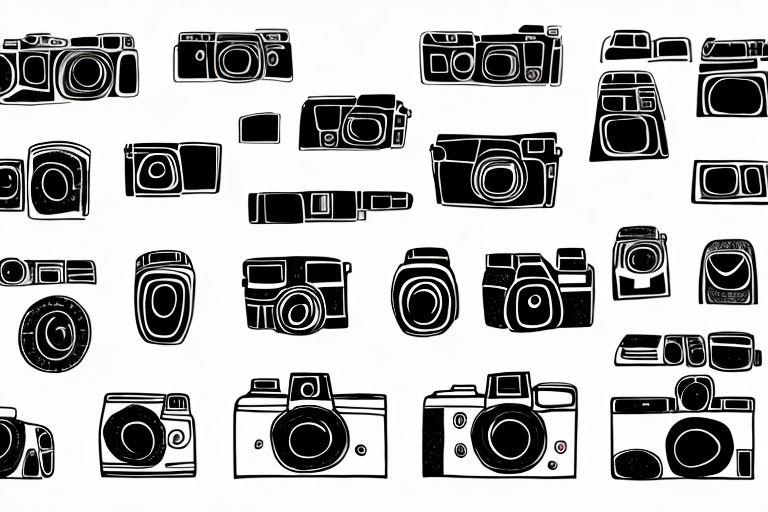When it comes to capturing the beauty and essence of interior spaces, having a good camera is essential for interior designers. Whether you are a professional or a beginner in the field of interior design, investing in a high-quality camera can make a significant difference in the quality of your photographs.
Why Interior Designers Need a Good Camera
Interior designers rely on visual representation to showcase their work and attract potential clients. In this digital age, where social media platforms are crucial for promoting businesses, having captivating photographs of your interior designs is vital. A good camera allows you to capture the true colors, textures, and intricate details of your work, providing a realistic portrayal of the space.
Additionally, high-quality photographs create a sense of professionalism and credibility. Clients often make decisions based on visuals, and stunning photographs can help you stand out from your competitors. So, investing in a good camera is an investment in your business and your brand as an interior designer.
Furthermore, a good camera enables interior designers to effectively communicate their design concepts to clients and collaborators. By capturing the space from different angles and perspectives, designers can showcase the flow, functionality, and overall aesthetic of their designs. This visual representation helps clients better understand the proposed design and make informed decisions.
In addition to client communication, a good camera also allows interior designers to document their work for portfolio purposes. By capturing high-quality photographs of completed projects, designers can create a comprehensive portfolio that showcases their skills and expertise. These photographs can be used for website galleries, social media posts, and marketing materials, helping designers attract new clients and secure future projects.
Factors to Consider When Choosing a Camera for Interior Design
When selecting a camera for interior design photography, there are several factors to keep in mind. One of the most crucial factors is the camera’s sensor size. Cameras with larger sensors generally produce better image quality with less noise and better low-light performance.
The resolution of the camera is also essential, especially if you want to capture fine details in interior spaces. Opt for cameras with high megapixel counts, as they allow for more significant cropping and detailed shots. Additionally, considering the camera’s dynamic range and ability to handle different lighting conditions is important for capturing the true essence of an interior space.
Another factor to consider is the camera’s lens compatibility. As an interior designer, you may need to use various lenses to capture different perspectives and focal lengths. Ensure that the camera you choose has a wide range of compatible lenses available.
Other factors to consider include the camera’s size and weight, ease of use and interface, battery life, and additional features such as wireless connectivity options and image stabilization.
In the next sections, we will delve deeper into specific features and camera types that are ideal for interior design photography.
One important aspect to consider when choosing a camera for interior design is the camera’s shooting modes and settings. Look for a camera that offers manual control options, as this will allow you to have more control over the exposure, focus, and other settings. This is particularly useful when dealing with challenging lighting conditions or when you want to achieve a specific artistic effect.
Additionally, the camera’s image stabilization capabilities can greatly impact the quality of your interior design photographs. Image stabilization helps reduce camera shake, resulting in sharper images, especially when shooting handheld or in low-light situations. Look for cameras with built-in image stabilization or consider investing in lenses with image stabilization technology.
Top Features to Look for in a Camera for Interior Design Photography
When selecting a camera for interior design photography, certain features can greatly enhance your shooting experience. Here are some top features to look for:
1. High Megapixel Count: A camera with a high megapixel count allows you to capture intricate details and produce highly detailed images. Look for cameras with 24 megapixels or more for optimal results.
2. Full-Frame Sensor: Full-frame sensors are larger than crop sensors and offer better low-light performance, dynamic range, and image quality. They are ideal for capturing the true colors and textures of interior spaces.
3. Wide Dynamic Range: Interior spaces often have varying light conditions, from bright windows to shadowed corners. A camera with a wide dynamic range can handle these lighting challenges and ensure proper exposure throughout the frame.
4. Tilt or Articulating Screen: A tilting or articulating screen allows you to shoot from various angles and positions, making it easier to capture unique perspectives and compositions.
5. Wireless Connectivity: Cameras with built-in Wi-Fi or Bluetooth capabilities allow you to transfer images directly from the camera to your smartphone or computer. This feature simplifies the process of sharing your work on social media or with clients.
6. Image Stabilization: Interior photography often requires shooting in low-light conditions, which can result in camera shake and blurry images. Optical or sensor-shift image stabilization can minimize the effects of camera shake and help you capture sharp, clear images.
7. Fast and Accurate Autofocus: The ability to quickly and accurately focus is essential when photographing interiors. Look for cameras with reliable autofocus systems that can lock onto subjects without hesitation.
Keep these features in mind when choosing a camera for interior design photography, as they can greatly improve the quality of your images and enhance your shooting experience.
8. Manual Exposure Control: Having manual exposure control allows you to have full control over the exposure settings of your camera. This is particularly important in interior design photography, where you may encounter challenging lighting situations that require precise adjustments.
9. RAW File Format: Look for a camera that supports shooting in RAW file format. RAW files contain unprocessed data from the camera’s sensor, giving you more flexibility in post-processing and allowing you to make adjustments to exposure, white balance, and other settings without sacrificing image quality.









